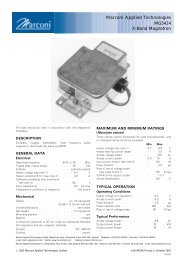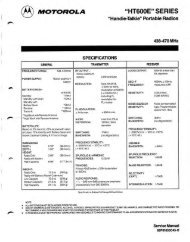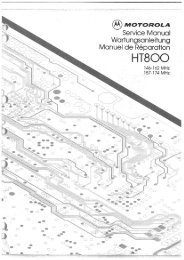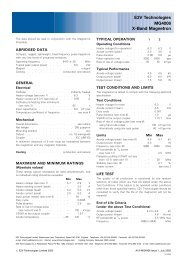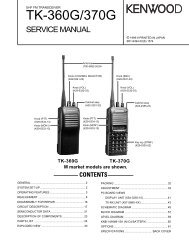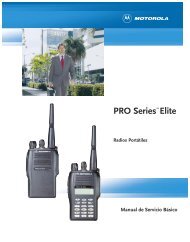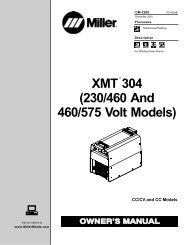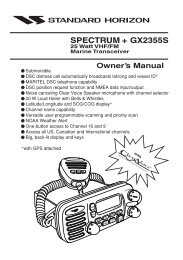Simrad SP90
Simrad SP90
Simrad SP90
Create successful ePaper yourself
Turn your PDF publications into a flip-book with our unique Google optimized e-Paper software.
Operation4 OPERATION4.1 IntroductionNoteWhat this chapter containsAll operation of the sonar is normally made from the SonarOperating Panel. Optionally, a standard mouse or trackball maybe connected, and the sonar can then be operated by means of themenu system alone.This section contains a detailed description of the start and stopprocedures, the principles of the menu operation, and otheroperational procedures for the daily use of the <strong>SP90</strong>.In order to obtain the necessary understanding of the sonar design,refer to the System description chapter. The various presentationformats are described in the Display modes chapter.→ The System description is provided from page 1.→ The Display modes are explained from page 12.The following procedures are provided in this chapter:→ Start and stop procedure, page 36.→ Menu operation, page 38.→ Visual aids, page 45.→ Cosmetics, page 46.→ Installation of options, page 49.→ On-line help, page 51.Remember that the standard <strong>SP90</strong> transducer in its lower positionreaches 1,2 meters below the vessel’s hull (1,6 meters for optionalversion). Maximum recommended speed in that position is 20knots!Maintaining the sonarTo ensure the best possible reliability of the <strong>SP90</strong> sonar, it isimportant to follow the maintenance procedures described in theMaintenance chapter.→ Refer to page 147.CautionNoteImportant when docking the vesselWhen docking the vessel, the switch S102 at the rear of the SonarProcessor Unit must be switched to the OFF position to preventinadvertent use of the sonar. The transducer can be damaged ifallowed to transmit in air.→ For location of the switch S102, refer to figure 8 on page 37.When docking, refer to the Maintenance chapter.850--164511 / B35




